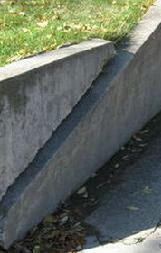Expansive soils consist of plastic clays and clay shales that often contain colloidal clay minerals such as the montmorillonites. They include marls, clayey siltstone and sandstone, and saprolites. Some of these soils, especially dry residual clayey soil, may heave under low applied pressure but collapse under higher pressure. Other soils may collapse initially but heave later on. Estimates of the potential heave of these soils are necessary for consideration in the foundation design.
Degrees of expansive potential may be indicated as follows:
Degree
of Expansion
|
Liquid Limit,%
|
Plasticity
Index, %
|
Natural
Soil Suction, tsf
|
High
|
> 60
|
> 35
|
> 4.0
|
Marginal
|
50-60
|
25-35
|
1.5-4.0
|
Low
|
< 50
|
< 25
|
< 1.5
|
Soils with Liquid Limit (LL) < 35 and Plasticity Index (PI) < 12 have no potential for swell and need not be tested.
The potential heave of expansive soils should be determined from results of consolidometer tests, ASTM D 4546. These heave estimates should then be considered in determining preparation of foundation soils to reduce destructive differential movements and to provide a foundation of sufficient capacity to withstand or isolate the expected soil heave.

Good to have few noted in related topics
ReplyDelete